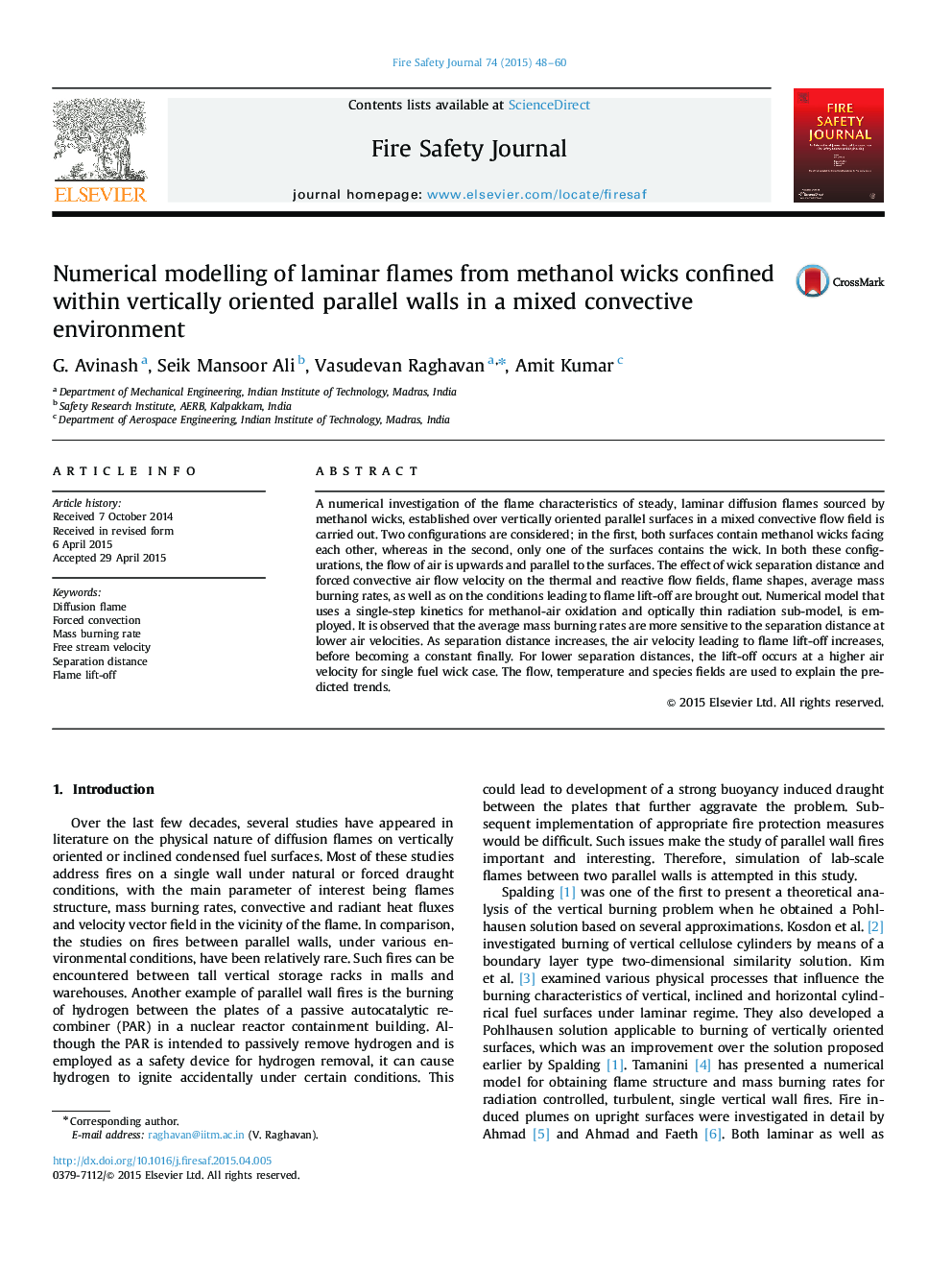| کد مقاله | کد نشریه | سال انتشار | مقاله انگلیسی | نسخه تمام متن |
|---|---|---|---|---|
| 269814 | 504703 | 2015 | 13 صفحه PDF | دانلود رایگان |
• Mass burning rates of diffusion flames from vertical methanol wicks is presented.
• Effect of wick separation and air velocity on flame lift-off is presented.
• Numerical model with 1-step reaction and optically thin radiation model is employed.
• Mass burning rate is more sensitive to separation distance at low air velocity.
• Flame lift-off occurs at a higher air velocity for single wick case.
A numerical investigation of the flame characteristics of steady, laminar diffusion flames sourced by methanol wicks, established over vertically oriented parallel surfaces in a mixed convective flow field is carried out. Two configurations are considered; in the first, both surfaces contain methanol wicks facing each other, whereas in the second, only one of the surfaces contains the wick. In both these configurations, the flow of air is upwards and parallel to the surfaces. The effect of wick separation distance and forced convective air flow velocity on the thermal and reactive flow fields, flame shapes, average mass burning rates, as well as on the conditions leading to flame lift-off are brought out. Numerical model that uses a single-step kinetics for methanol-air oxidation and optically thin radiation sub-model, is employed. It is observed that the average mass burning rates are more sensitive to the separation distance at lower air velocities. As separation distance increases, the air velocity leading to flame lift-off increases, before becoming a constant finally. For lower separation distances, the lift-off occurs at a higher air velocity for single fuel wick case. The flow, temperature and species fields are used to explain the predicted trends.
Journal: Fire Safety Journal - Volume 74, May 2015, Pages 48–60
